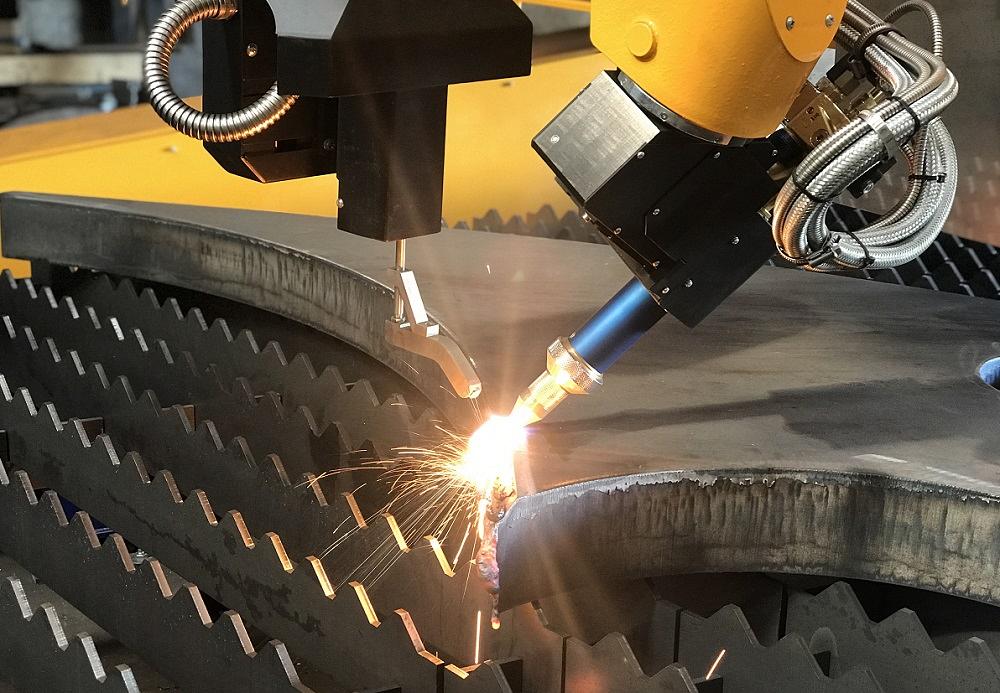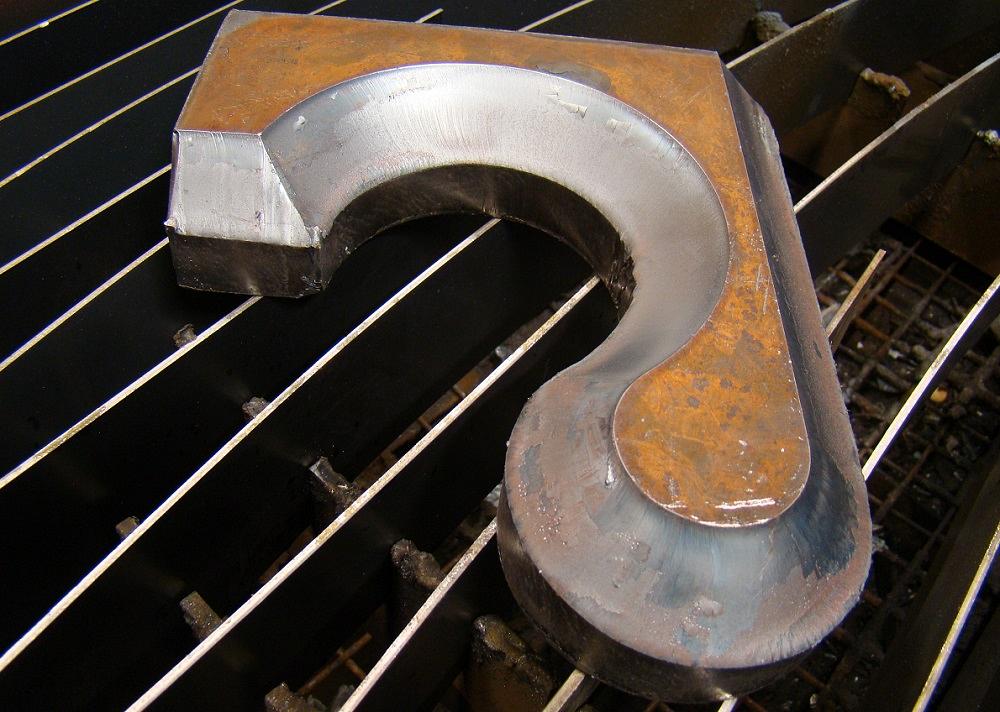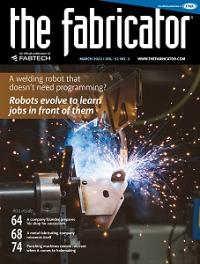Editor-in-Chief
- FMA
- The Fabricator
- FABTECH
- Canadian Metalworking
Categories
- Additive Manufacturing
- Aluminum Welding
- Arc Welding
- Assembly and Joining
- Automation and Robotics
- Bending and Forming
- Consumables
- Cutting and Weld Prep
- Electric Vehicles
- En Español
- Finishing
- Hydroforming
- Laser Cutting
- Laser Welding
- Machining
- Manufacturing Software
- Materials Handling
- Metals/Materials
- Oxyfuel Cutting
- Plasma Cutting
- Power Tools
- Punching and Other Holemaking
- Roll Forming
- Safety
- Sawing
- Shearing
- Shop Management
- Testing and Measuring
- Tube and Pipe Fabrication
- Tube and Pipe Production
- Waterjet Cutting
Industry Directory
Webcasts
Podcasts
FAB 40
Advertise
Subscribe
Account Login
Search
Making one-step beveling a reality in the metal fabrication shop
Laser scanning of parts and control software are keys to eliminating secondary beveling processes
- By Dan Davis
- March 2, 2022
- Article
- Plasma Cutting
As with many things in metal fabricating, beveling of thick materials is not an exact science. Sometimes a metal fabricating shop avoids trying to put a bevel on a part made from 1-in. plate, for example, because its table doesn’t have enough power to make the thicker cut that’s necessary for something like a simple groove bevel or because the attempt to make such a bevel results in material loss toward the bottom of the bevel. It’s not worth the hassle, so a secondary process is used.
In some applications, particularly where precision is needed, like in the power generation industry, a robot is used to create the bevel that the existing plasma cutting technology could not. The use of a robot in these instances adds considerable material handling and production time to the beveling process. That, of course, eats into a shop’s profit margins and increases the time between accepting the part order and delivering the goods.
Engineers at MicroStep, a machine tool manufacturer located in Bratislava, Slovakia, recognized this shortcoming. They believed MicroStep’s cutting machines had the means to deliver precise bevel cuts, but they needed a way to ensure that beveling results matched expectations.
That led to the development of what the company calls its Additional Beveling Process. The key to the process is a laser scanning device that feeds part parameters to the company’s CAM software.
“When the part is scanned, the control software is able to interpret those scanned images to get an idea of what the part is in reality, not what it is supposed to be. The control software is then able to adjust accordingly to create precise bevels on the part,” said John Prevish, national sales manager for fabrication machinery, United Precision Services, the distributor and service provider for MicroStep machinery in the U.S.
ABP doesn’t require a separate processing station. A machine operator places the thick part on the cutting table and engages the laser scanner, which logs dimensions for length, width, thickness, and shape of all sides and internally cut features. (The scanning unit can be attached to the bevel head or mounted on a separate tool station.) The CAM software, which takes into account the required bevels programmed for the job, then creates a cutting plan that aligns with the part’s actual dimensions.
Using the laser scanner again, the machine locates the exact position of the part on the cutting table. When the starting point for cutting has been verified, the cutting process begins. Again, the cutting system adjusts the program to accommodate the realities of the part so that an accurate bevel can be delivered.
The system can make V, Y, X, and K bevel cuts. For the K and X cuts, the part needs to be turned and scanned again after the initial cutting is completed.
“This is really going to be attractive to the people that do or want to do thick material cutting. Companies that produce parts for construction or mining equipment, for example, will like these beveling capabilities,” Prevish said.
What is noteworthy about ABP is that it’s not limited to plasma cutting. For a fabricating company with a cutting table with multiple capabilities, the initial straight-edge cut can be done with an oxyfuel torch, and high-definition plasma can be used for the secondary beveling cuts on the stand-alone parts. The technology also can be used with waterjets and laser cutting heads.
Prevish added that MicroStep has made a name for itself with its 3D cutting advancements, one of which is its machinery’s ability to cut shapes in dome-shaped parts, which are probably more easily recognized as pressure vessel heads. One of the reasons that ABP can accomplish such accurate bevels is that it relies on MicroStep’s ACTG (autocalibration of tool geometry) technology. This system, which comprises a calibration station, a torch extension probe, and the control software, ensures that the torch tip always stays in the required position during rotation and tilting of the cutting head. ACTG is designed to eliminate the need for mechanical adjustment of the bevel head, which can add significant setup time.
Adding ABP to a standard cutting table adds cost to the system, of course, but company officials said that such an investment is lower than purchasing and maintain secondary processes to produce the same bevels. In fact, Prevish said the bevel cuts made on the gantry-type machine are much more precise than what secondary processes can offer because of the table’s rigidity.
About the Author

Dan Davis
2135 Point Blvd.
Elgin, IL 60123
815-227-8281
Dan Davis is editor-in-chief of The Fabricator, the industry's most widely circulated metal fabricating magazine, and its sister publications, The Tube & Pipe Journal and The Welder. He has been with the publications since April 2002.
Related Companies
subscribe now

The Fabricator is North America's leading magazine for the metal forming and fabricating industry. The magazine delivers the news, technical articles, and case histories that enable fabricators to do their jobs more efficiently. The Fabricator has served the industry since 1970.
start your free subscription- Stay connected from anywhere

Easily access valuable industry resources now with full access to the digital edition of The Fabricator.

Easily access valuable industry resources now with full access to the digital edition of The Welder.

Easily access valuable industry resources now with full access to the digital edition of The Tube and Pipe Journal.
- Podcasting
- Podcast:
- The Fabricator Podcast
- Published:
- 04/16/2024
- Running Time:
- 63:29
In this episode of The Fabricator Podcast, Caleb Chamberlain, co-founder and CEO of OSH Cut, discusses his company’s...
- Industry Events
16th Annual Safety Conference
- April 30 - May 1, 2024
- Elgin,
Pipe and Tube Conference
- May 21 - 22, 2024
- Omaha, NE
World-Class Roll Forming Workshop
- June 5 - 6, 2024
- Louisville, KY
Advanced Laser Application Workshop
- June 25 - 27, 2024
- Novi, MI

































